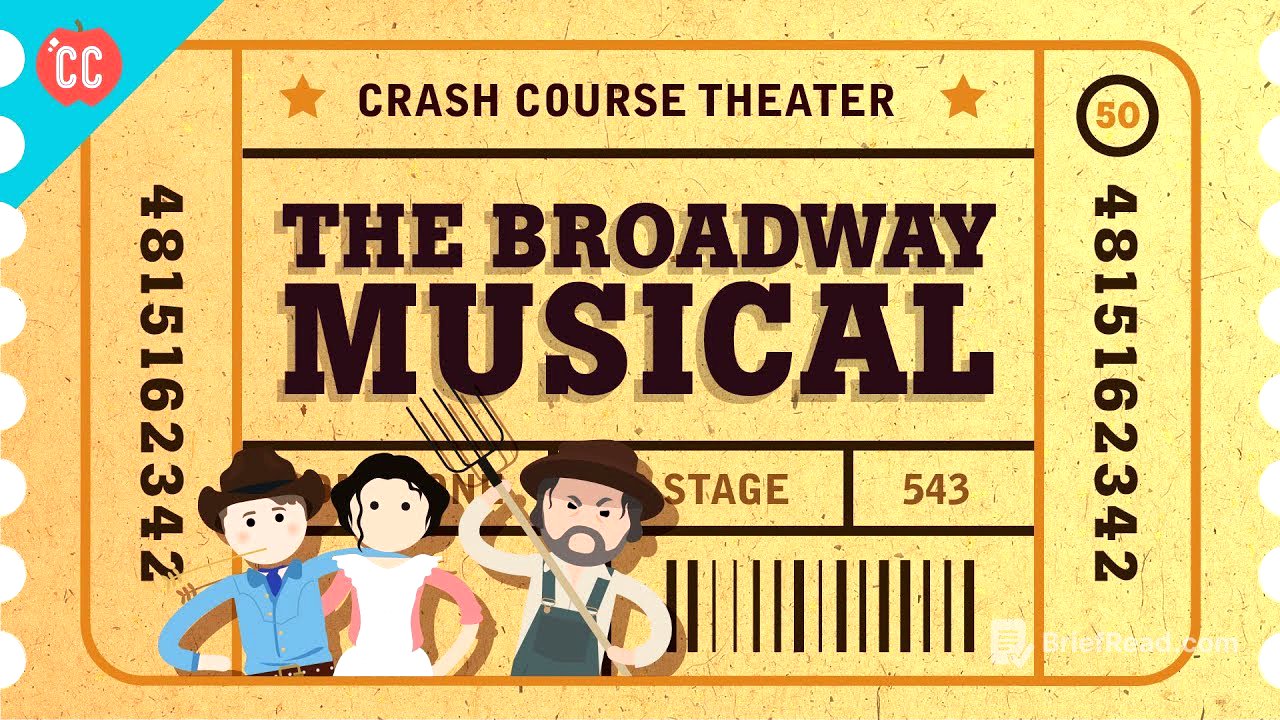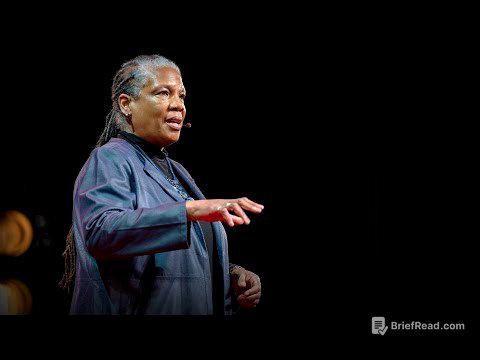TLDR;
This episode of Crash Course Theater explores the history and significance of the Broadway book musical, highlighting its evolution from earlier forms of musical entertainment to its Golden Age and beyond. It emphasizes the importance of integrating song, story, and dance to create uniquely American theatrical experiences.
- The Broadway book musical is a significant American contribution to global entertainment.
- The integration of music, lyrics, and narrative defines the book musical.
- "Oklahoma!" is presented as a pivotal work that exemplifies the successful integration of various elements.
Introduction to the Broadway Book Musical [0:00]
The Broadway book musical is described as America's greatest theatrical invention, influencing theater and Hollywood movies globally. It's a billion-dollar industry present on every continent except Antarctica, and even on cruise ships. The episode will focus on the Golden Age of the Broadway musical, examining how song, story, and dance combine to create a unique theatrical experience.
Early Forms of American Musical Theater [0:58]
Theater and music have historically been intertwined, from Greek tragedies to various forms of folk theater. American theater has its own musical traditions, including the minstrel show, and imported forms like Vaudeville, pantomime, Operetta, and comedy burlesque. "The Black Crook" in the 1860s is considered by some to be the first American Musical, born from combining a stranded Parisian ballet troop with an incomprehensible play. The first American Musical comedies on Broadway were created in the 1870s by haragan and Hart, who expanded variety acts into song-filled shows, often relying on ethnic stereotypes.
The Rise of Book Musicals [2:57]
At the turn of the 20th century, African-American musicals gained popularity, and the Ziegfeld Follies were born in 1907, emphasizing leggy chorus girls and loosely linked sketches. The Follies walked the line between titillating and classy, becoming a staple of Broadway. Jerome Kern is credited as the father of the book musical, integrating songs that were relevant to the plot and characters. With lyricists like Guy Bolton and PG Wodehouse, Kern created charming, low-key musicals at the Princess Theater, revolutionizing the form.
The Golden Age of Broadway [5:35]
By the late 1920s, the idea of integrating songs with the plot gained traction, leading to a surge in new composers and lyricists like Richard Rogers, Lawrence Hart, Cole Porter, and George and Ira Gershwin. "Showboat" (1927), by Jerome Kern and Oscar Hammerstein, pushed the musical towards more serious themes, addressing racism and offering rich roles for African-American actors. The Broadway musical continued through the Great Depression and World War II, entering a Golden Age defined by wit, sophistication, hummable songs, dazzling choreography, and complex characters.
Oklahoma! as a Landmark Musical [6:54]
"Oklahoma!" (1943), written by Richard Rogers and Oscar Hammerstein, is highlighted as a pivotal musical that integrated music, lyrics, book scenes, and ballet to tell a distinctly American story. Based on Lynn Rig's play "Green Grow the Lilacs," the musical features memorable songs like "Oh, What a Beautiful Morning" and a 15-minute dream ballet choreographed by Agnes de Mill. The musical's success lay in its distinctly American sound, integral songs, and complex characters, pushing the boundaries of what a musical could handle.
Legacy and Conclusion [10:17]
After "Oklahoma!," the Golden Age continued with musicals like "Carousel," "South Pacific," "The Sound of Music," and "The King and I" by Rogers and Hammerstein, as well as works by Alan J. Lerner and Frederick Loewe, and shows like "Guys and Dolls," "West Side Story," and "Gypsy." The episode concludes by acknowledging the book musical's enduring influence and its ability to captivate audiences with its virtuosic, hopeful, and big-hearted nature.









